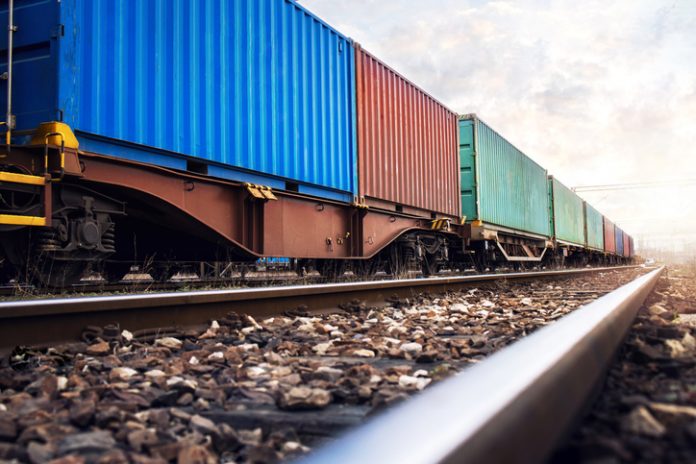Railroads face the same challenges as every other American business: Struggling to find workers, dealing with supply-chain disruptions, and meeting real-time customer demands. The difference is rail is the backbone of America’s supply chain and when it has slowdowns, it affects the entire economy.
Which is why, freight rail advocates argue, this is the wrong time to impose more federal regulations on the industry, particularly rules that could make it harder for rail to meet market demand.
Federal regulators are considering a federal reciprocal switching rule regulating how rail companies charge for the use of their facilities and customers by their competitors.
“Shippers argue reciprocal switching would create more competition in a consolidated industry, and in turn pressure carriers to offer lower rates and better service,” wrote Supply Chain Dive editor Sarah Zimmerman. “Railroads argue the opposite, saying it could exacerbate delays by forcing additional complexity into their operations.”
Economist Robert Shapiro believes the math is clear: “This regulation — if it were to be approved — would dampen investment in railroad networks,” he said during a transportation roundtable hosted by InsideSources. “For consumers, their costs would go up.”
The concept of “switching” — private companies allowing their competitors to share their infrastructure or networks — is relatively common in the private sector. At issue in the new regulation is the federal government forcing a large number of switches which, rail advocates say, is much more complicated than it sounds. The result, whereby railroads would turn traffic over to competitors, would be inefficiencies and delays at a time when rail is already battling labor and equipment shortages.
“By imposing it, mandating it, you run into a whole problem of potential bottlenecks and delays and unrecoverable costs with investment and gross inefficiencies,” said Stephen Pociask with American Consumer Institute. “If someone gets favorable pricing as a result, then who is going to pay more for it? It’s either going to raise the rates on the other shippers, or you’re going to affect the earnings, or you’re going to do both.”
The Associated Press reports that lack of rail capacity is already leading to farmers being turned away from full grain elevators and ethanol plants cutting production while waiting for empty railcars to arrive. The speakers argued the solution is to keep rail profitable so the industry will continue to draw investment and expand its services. Raising fees and cutting profits would have the opposite effect.
Still, it would appear the Surface Transportation Board (STB) is giving this regulation serious consideration. That was after an executive order from President Joe Biden in 2021 to further policies aimed at increasing competition. In terms of rail, Biden said railroads tend to own their tracks and put their freight above that of others. STB was told to require track owners to, among other things, strengthen rules for fair treatment of competing freight companies.
U.S. Wheat Associates (USW) is among the suppliers asking STB for reciprocal switching.
“Except for the Pacific Northwest, U.S. wheat production is not close to river transportation, and export facilities are too far away to rely on trucking,” wrote USW Market Analyst Michael Anderson in March. “As a result, railroads play a key role in the export supply system (but) over the last decade, rail rates have increased exponentially, and rates to ship wheat are higher than for other commodities with similar handling characteristics.”
Shapiro, who served in the Clinton administration and was an economic advisor to President Barack Obama, conceded there are “certain goods that can realistically really only be shipped by rail, such as coal and wheat.” However, he rejected the monopoly argument.
“Advocates of this regulation say this only applies to certain pieces of the network in which a single railroad has a monopoly,” said Shapiro. “But there is, in effect, no monopoly because the fact that there is only one railroad serving one particular location between two points doesn’t mean that the shipment has to use that route.”
There are often other competitive forces at play that shippers can use that will avoid that single service place, said Shapiro. “There is plenty of competition apart from other goods that can be shipped by truck as well as rail or by barge if the single service facility is over a body of water.” Railroads point to “product and geographic competition” as factors to consider, meaning manufacturers can substitute products for production to not rely on rail service oftentimes, or get the same product from different regions, thereby changing the equation for how the product arrives – including by rail.
Pociask pointed to another potential impact of the proposed regulations: Moving more freight off of rail and onto roads and highways.
Switching mandates could lead to rail bottlenecks, which would drive up costs and delay goods from reaching the marketplace. And because trucks produce significantly more emissions per ton of freight moved — rail reduces emissions by 75 percent on average compared to trucking — the impacts will be felt beyond the rail yard.
Originally published by Inside Sources. Republished with permission.











